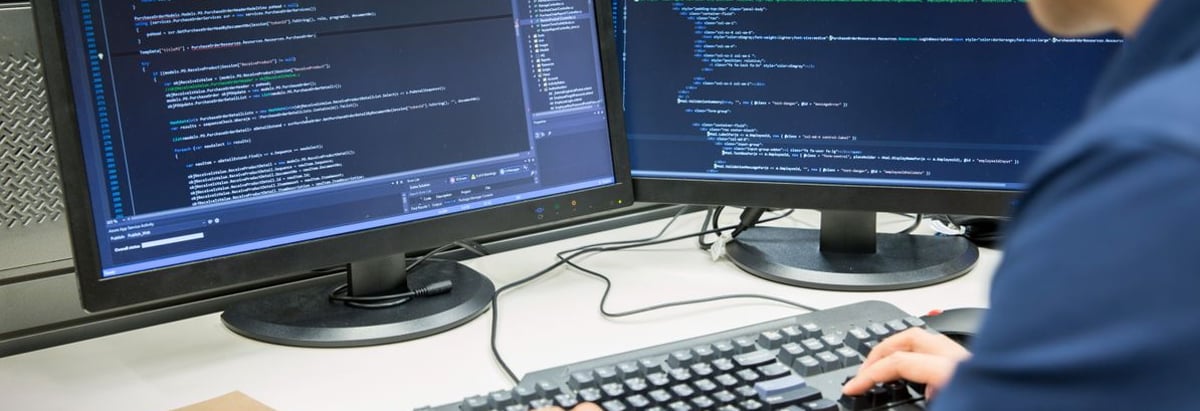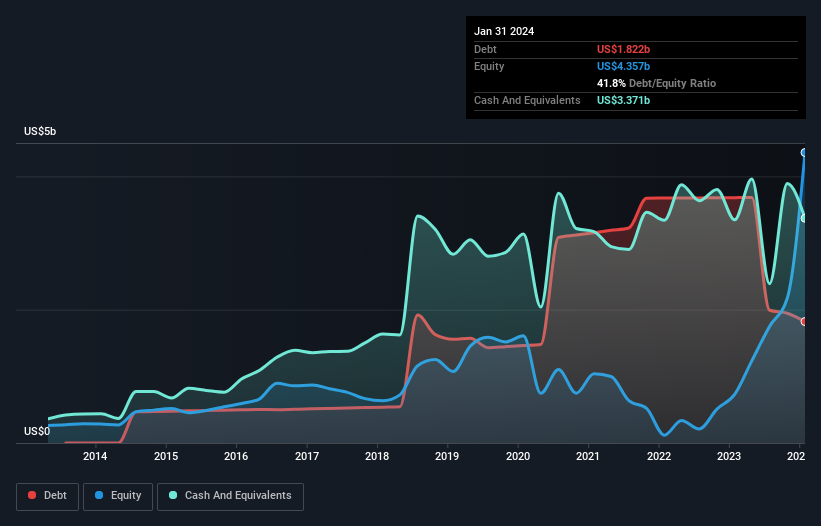- United States
- /
- Software
- /
- NasdaqGS:PANW
These 4 Measures Indicate That Palo Alto Networks (NASDAQ:PANW) Is Using Debt Safely

Howard Marks put it nicely when he said that, rather than worrying about share price volatility, 'The possibility of permanent loss is the risk I worry about... and every practical investor I know worries about.' So it seems the smart money knows that debt - which is usually involved in bankruptcies - is a very important factor, when you assess how risky a company is. We can see that Palo Alto Networks, Inc. (NASDAQ:PANW) does use debt in its business. But the real question is whether this debt is making the company risky.
Why Does Debt Bring Risk?
Debt and other liabilities become risky for a business when it cannot easily fulfill those obligations, either with free cash flow or by raising capital at an attractive price. If things get really bad, the lenders can take control of the business. However, a more usual (but still expensive) situation is where a company must dilute shareholders at a cheap share price simply to get debt under control. Of course, plenty of companies use debt to fund growth, without any negative consequences. When we examine debt levels, we first consider both cash and debt levels, together.
View our latest analysis for Palo Alto Networks
What Is Palo Alto Networks's Net Debt?
As you can see below, Palo Alto Networks had US$1.82b of debt at January 2024, down from US$3.68b a year prior. However, it does have US$3.37b in cash offsetting this, leading to net cash of US$1.55b.

How Strong Is Palo Alto Networks' Balance Sheet?
The latest balance sheet data shows that Palo Alto Networks had liabilities of US$7.77b due within a year, and liabilities of US$6.17b falling due after that. Offsetting these obligations, it had cash of US$3.37b as well as receivables valued at US$2.34b due within 12 months. So its liabilities total US$8.22b more than the combination of its cash and short-term receivables.
Given Palo Alto Networks has a humongous market capitalization of US$91.7b, it's hard to believe these liabilities pose much threat. Having said that, it's clear that we should continue to monitor its balance sheet, lest it change for the worse. Despite its noteworthy liabilities, Palo Alto Networks boasts net cash, so it's fair to say it does not have a heavy debt load!
Better yet, Palo Alto Networks grew its EBIT by 3,297% last year, which is an impressive improvement. That boost will make it even easier to pay down debt going forward. There's no doubt that we learn most about debt from the balance sheet. But ultimately the future profitability of the business will decide if Palo Alto Networks can strengthen its balance sheet over time. So if you're focused on the future you can check out this free report showing analyst profit forecasts.
But our final consideration is also important, because a company cannot pay debt with paper profits; it needs cold hard cash. While Palo Alto Networks has net cash on its balance sheet, it's still worth taking a look at its ability to convert earnings before interest and tax (EBIT) to free cash flow, to help us understand how quickly it is building (or eroding) that cash balance. Over the last two years, Palo Alto Networks actually produced more free cash flow than EBIT. That sort of strong cash conversion gets us as excited as the crowd when the beat drops at a Daft Punk concert.
Summing Up
We could understand if investors are concerned about Palo Alto Networks's liabilities, but we can be reassured by the fact it has has net cash of US$1.55b. And it impressed us with free cash flow of US$2.9b, being 701% of its EBIT. So we don't think Palo Alto Networks's use of debt is risky. There's no doubt that we learn most about debt from the balance sheet. But ultimately, every company can contain risks that exist outside of the balance sheet. Be aware that Palo Alto Networks is showing 2 warning signs in our investment analysis , and 1 of those doesn't sit too well with us...
If you're interested in investing in businesses that can grow profits without the burden of debt, then check out this free list of growing businesses that have net cash on the balance sheet.
New: Manage All Your Stock Portfolios in One Place
We've created the ultimate portfolio companion for stock investors, and it's free.
• Connect an unlimited number of Portfolios and see your total in one currency
• Be alerted to new Warning Signs or Risks via email or mobile
• Track the Fair Value of your stocks
Have feedback on this article? Concerned about the content? Get in touch with us directly. Alternatively, email editorial-team (at) simplywallst.com.
This article by Simply Wall St is general in nature. We provide commentary based on historical data and analyst forecasts only using an unbiased methodology and our articles are not intended to be financial advice. It does not constitute a recommendation to buy or sell any stock, and does not take account of your objectives, or your financial situation. We aim to bring you long-term focused analysis driven by fundamental data. Note that our analysis may not factor in the latest price-sensitive company announcements or qualitative material. Simply Wall St has no position in any stocks mentioned.
About NasdaqGS:PANW
Reasonable growth potential with adequate balance sheet.
Similar Companies
Market Insights
Community Narratives



